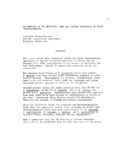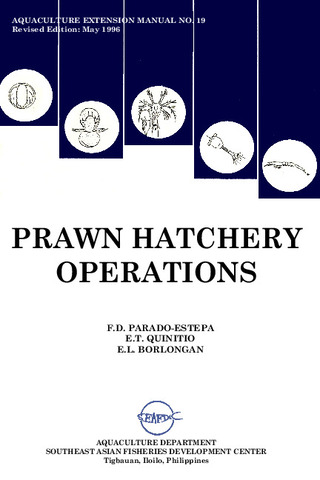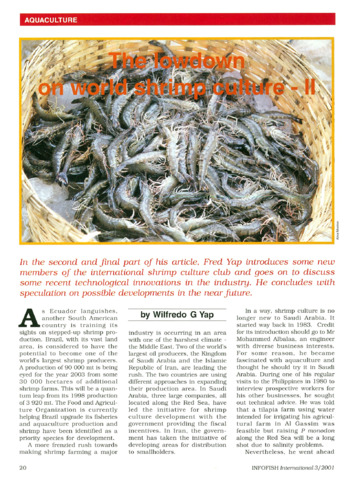Interaction between dietary levels of calcium and phosphorus on growth of juvenile shrimp, Penaeus monodon
- Global styles
- MLA
- Vancouver
- Elsevier - Harvard
- APA
- Help

View/
Date
1999Author
Page views
1,178ASFA keyword
AGROVOC keyword
Taxonomic term
Metadata
Show full item record
Share
Abstract
Information on the dietary phosphorus (P) requirement is essential in the formulation of a cost-effective and low-pollutant feed. Ten isonitrogenous (40% CP) casein–gelatin-based diets containing five graded levels of P (0, 0.5, 1, 1.5, 2%) for each of two levels of calcium (Ca) (0, 1.5%) were fed to juvenile Penaeus monodon previously fed a basal diet containing no P and Ca for 15 days. After 90 days, survival ranged from 70% to 87% but was not significantly different (P<0.05) among treatments. A significant Ca and P interaction was obtained in percent weight gain. Shrimp fed with diet containing 0.5% supplemental P (0.74% total P) without Ca supplementation showed a significantly higher weight gain. For total biomass of shrimp, analysis of variance showed no significant interaction between Ca and P level, but significant differences were obtained among P levels when averaged over two Ca levels. The graded levels of P did not affect shrimp whole body P (1.07–1.13%). Whole body P was not a good index in determining the P requirement of P. monodon. In the absence of Ca, 0.5% supplemental P (0.74% total P) provided maximum growth of P. monodon postlarvae. The level of Ca should be reduced in formulating diets to minimize supplemental P, thereby effecting savings in feed cost and less loss of P to the water system.
Suggested Citation
Peñaflorida, V. D. (1999). Interaction between dietary levels of calcium and phosphorus on growth of juvenile shrimp, Penaeus monodon. Aquaculture , 172(3-4), 281-289. https://doi.org/10.1016/S0044-8486(98)00503-1
Type
ArticleISSN
0044-8486Collections
- Journal Articles [1258]
Related items
Showing items related by title, author, creator and subject.
-
An overview of the nutrition, feed and feeding techniques of prawn penaeid/shrimps
Piedad-Pascual, Felicitas (Philippine Council for Aquatic and Marine Research and Development, 1989)This paper echoes what transpired during the first International Conference of Penaeid Prawns/Shrimps held in Iloilo City in December 4-7, 1984, particularly on the Nutrition nd Feed Development. Around 25 papers were ... -
Series: Aquaculture extension manual; No. 19
Prawn hatchery operations
Parado-Estepa, Fe D.; Quinitio, Emilia T. ; Borlongan, Emeterio L. (Aquaculture Department, Southeast Asian Fisheries Development Center, 1996-05)
The manual, an updated version of the 1984 SEAFDEC/AQD manual, presents the underlying principles and step-by-step instructions of prawn larval and post-larval rearing. The techniques described are not only applicable to ...
; Borlongan, Emeterio L. (Aquaculture Department, Southeast Asian Fisheries Development Center, 1996-05)
The manual, an updated version of the 1984 SEAFDEC/AQD manual, presents the underlying principles and step-by-step instructions of prawn larval and post-larval rearing. The techniques described are not only applicable to ... -
The lowdown on world shrimp culture - II
Yap, Wilfredo G. (INFOFISH, 2001)This paper introduces some new members of the international shrimp culture club and goes on to discuss some recent technological innovations in the industry, particularly the polyculture of tilapia (mainly Oreochromis ...





